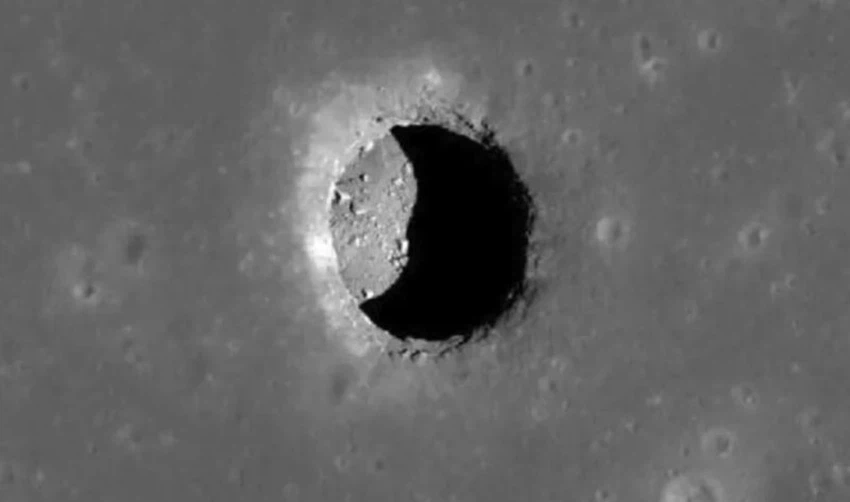The discovery of a large cave under the surface of the moon in which humans may be able to live
Arabia Weather - Scientists have discovered for the first time a cave on the surface of the moon with a depth of no less than 100 meters , which could be an ideal habitat for humans, according to researchers’ statements.
The researchers reported that this cave is one of hundreds of caves hidden in “an undiscovered world beneath the surface of the moon.” Countries are racing to create a habitat for humans on the moon, but they need to protect astronauts from radiation and extreme temperatures in space.
Helen Sharman, the first British astronaut, told BBC News that “the newly discovered cave looks like a good shelter for astronauts,” and she expected that humans would be able to live in lunar caves within 20 to 30 years.
Lorenzo Bruzzone and Leonardo Carrer of the University of Trento in Italy discovered the cave using radar to penetrate the entrance to a hole in a rocky plain called "Mare Tranquillitatis." This "sea" may have been an ocean at an earlier time, can be seen with the naked eye from Earth, and is also where the Apollo 11 spacecraft landed in 1969.
You may also be interested in:

Cave under the moon
The cave has an opening that leads to overhanging vertical walls and a sloping floor that extends beneath the moon's surface. The cave was created millions or billions of years ago when lava flowed onto the moon, creating a tunnel through the rocks.
Professor Carrier explained that the closest equivalent on Earth are the volcanic caves in Spain's Lanzarote, which the researchers visited as part of their work. He added:
“It's really amazing, when you make discoveries like this, and you look at these images, you realize you're the first person in the history of humanity to see this.”
Once Professor Bruzon and Professor Carrier realized how large the cave was, they concluded that it could be a good location for a lunar base. Carrier said:
“After all, life on Earth began in caves, so it makes sense that humans could live inside them on the Moon.”
The cave has not yet been fully explored, but researchers hope they can use lunar-penetrating radar, cameras, or even robots to map it.
Scientists first became aware of possible caves on the Moon about 50 years ago, and in 2010, a camera on the Lunar Reconnaissance Orbiter mission captured images of craters that scientists believe may be cave entrances. But researchers did not know how deep the caves were or whether they would collapse.
The work of Professor Bruzon and Professor Carrier has answered this question, although there is much work remaining to understand the full scope of the cave.
Francesco Sauro, coordinator of the European Space Agency's planetary cave team, told BBC News:
“We have very good images of the surface with a resolution of up to 25 cm. We can see the Apollo landing sites, but we know nothing about what lies beneath the surface. There are enormous opportunities for exploration.”
He added, "The research may also help us explore caves on Mars in the future," which may open the door to finding evidence of the existence of life on Mars, because life, if it exists, is likely to be inside caves protected from weather factors on the planet's surface. .
A cave on the moon may be useful to humans, but scientists also say it could help answer fundamental questions about the history of the moon, and even our solar system. The rocks inside the cave will not be damaged or eroded by space weather, so they can provide a comprehensive geological record dating back billions of years.
See also:
Without water or oxygen...the moon really rusts?
Seen with the naked eye...the moon is in conjunction with Mars at dawn tomorrow
Arabia Weather App
Download the app to receive weather notifications and more..



